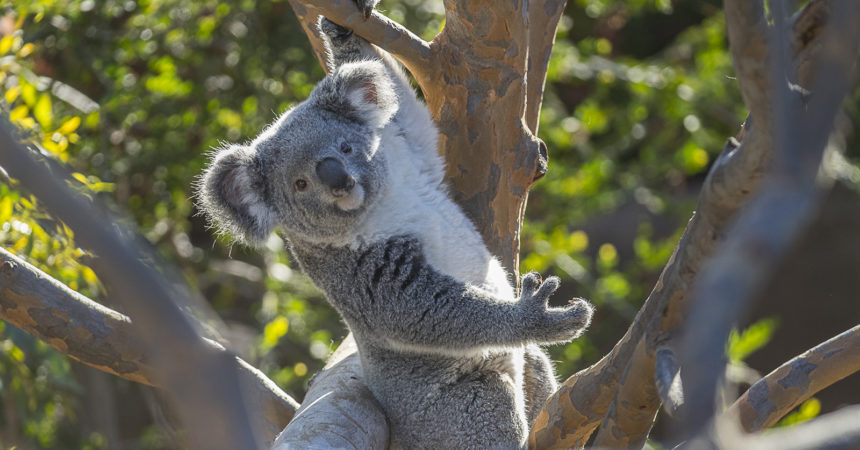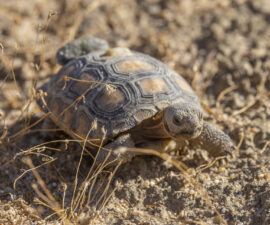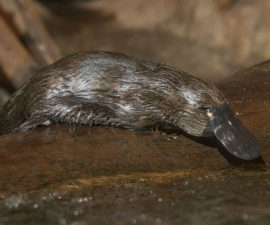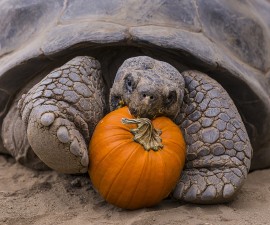While the expression “mind your Ps and Qs” has a checkered, uncertain origin, the gist of it today simply means to mind your manners. And after being quarantined at home for a few weeks, I, for one, could use a reminder! But it also got me thinking about animals, especially ones that begin with the letter Q. Q is a letter of royalty (queen), curiosity (query, question), fancy, ten-dollar words (quixotic, quintessential), and just fun or flashy words (quicksilver, quack, quaint). In the animal world, Qs are few and far between, (though Australia doesn’t shy away from this letter, as quokka and quoll illustrate). However, “P” animals really pop and are easier to spot! Let’s take a moment to mind some Ps and Qs in the animal world.
A Peek at Some Ps
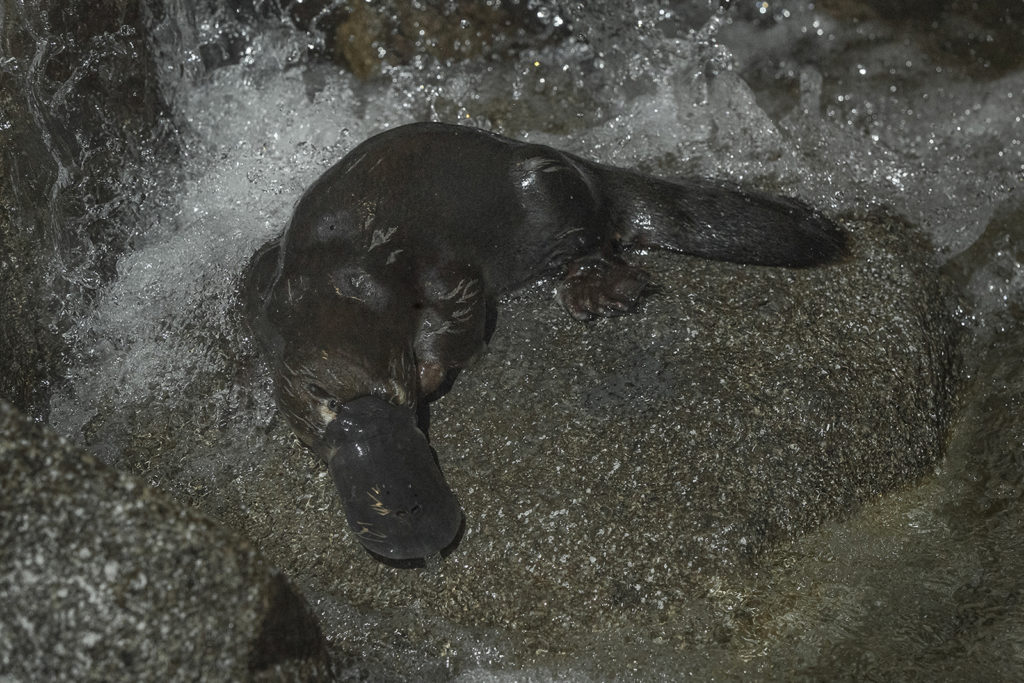
As a conservation organization, San Diego Zoo Global is deeply committed to the well-being of all the wildlife in our care, no matter how challenging and unique. Last November, a platypus pair arrived at the Safari Park to a specially built habitat. Not only are they the only platypuses outside of Australia, serving as important ambassadors for this unusual species, they, along with the echidna, are the only egg-laying mammals on the planet today. These peculiar monotremes once dominated the Australian landscape, until their pouch-packing cousins overtook them millions of years ago. Pouches may be a more secure way to bring your youngsters into the world, but these relic egg layers are still crazy cool! Read more about them here.
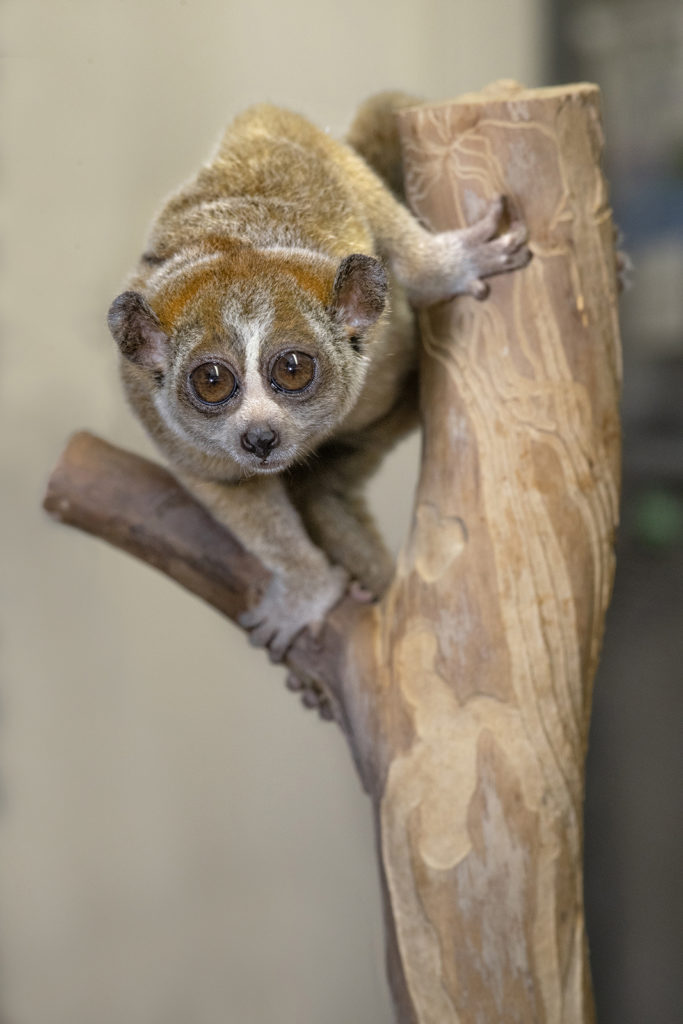
One pint-sized primate, the pygmy slow loris, is arboreal and nocturnal, with a talent for gripping branches with its hands or feet for astonishingly long periods of time. This serves them well for camouflage and snatching insects unawares. They inhabit forests of Vietnam, Laos, and parts of China. Their charming good looks works against them, though, as they are sometimes captured for the brutal, illegal pet trade. Click here to learn more about this bewitching primate and ways you can help them.
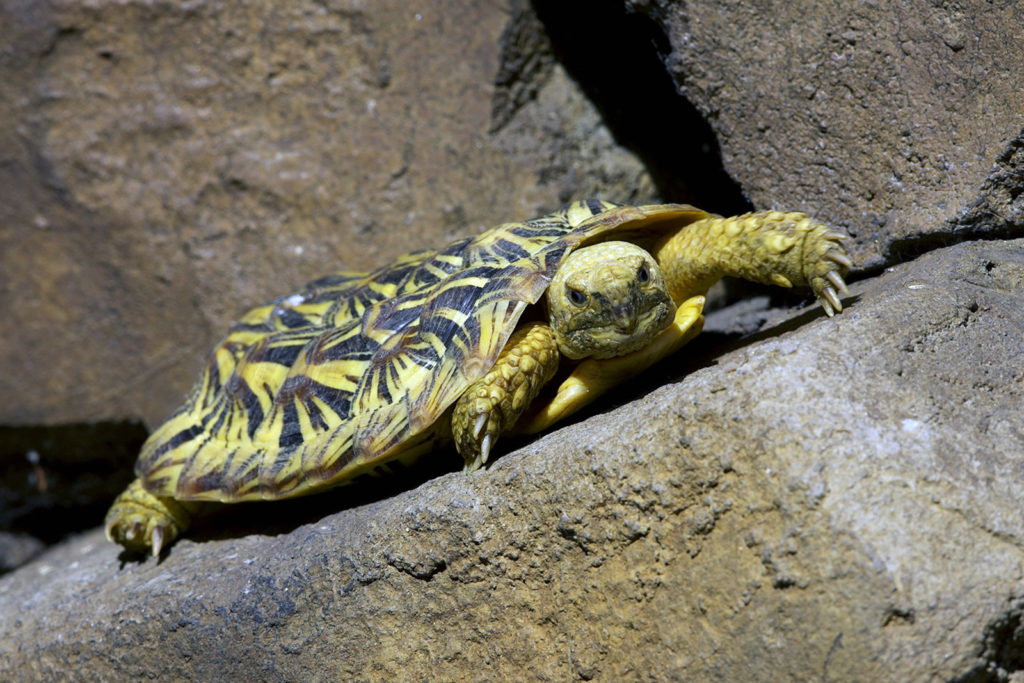
Sporting a surprising look, the pancake tortoise, native to Kenya and Tanzania, is flat, fast, and flexible. Its shell has openings between the bony plates, making it lighter and more bendable than other tortoises. It spends much of its time among the rocks in outcroppings called kopjes, where it can tuck in tight when threatened. It is quite athletic and considered the fastest and the best climber of turtles. Though it may overturn frequently while climbing, its flat shell makes it easy to right itself. Whew!
On to the Q
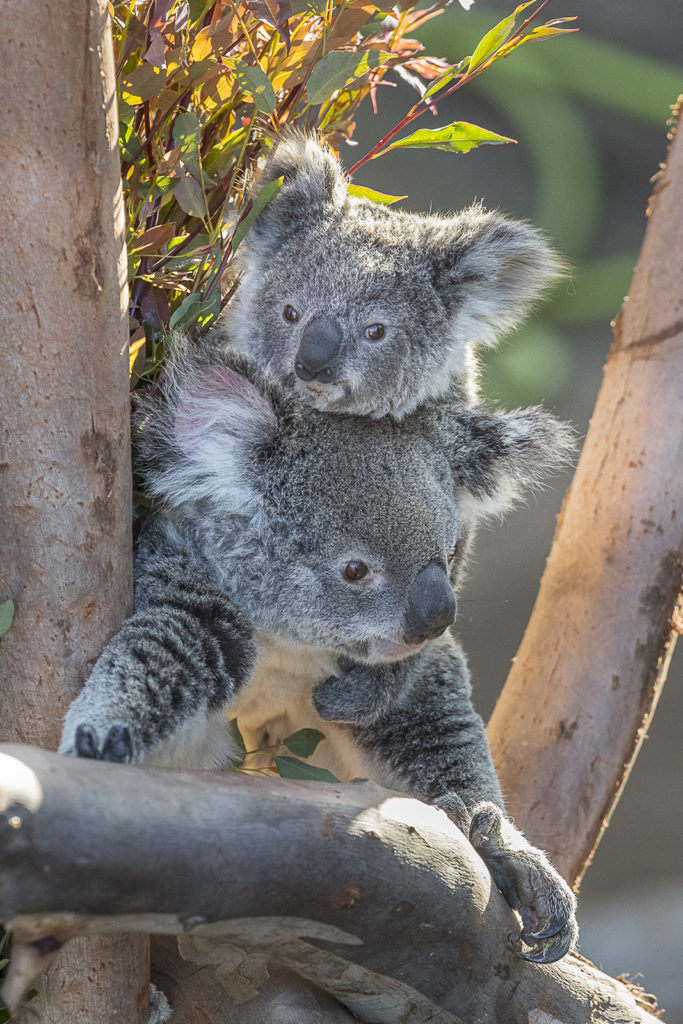
Another iconic species in Australia is the koala. There are two subspecies: southern and northern, also known as the Queensland koala. These bushy, arboreal marsupials make a living eating eucalyptus leaves (and occasionally soil to help them digest the leaves). The word koala is said to come from the Dharug peoples and means “no water,” as they can go for long periods without refreshment. San Diego Zoo has a long and storied reputation for caring for koalas, including recently raising a tiny joey after his mother passed away. Read more about his against-all-odds journey here. The devastating wildfires that raged across Australia a few months ago destroyed countless miles of habitat and took a toll on wildlife, but some of the rescued koalas were recently re-released after being nursed back to health. This story of hard work and hope will warm your heart. You can also check out what the koalas at the Zoo are up to right now (it may entail napping) on Koala Cam.
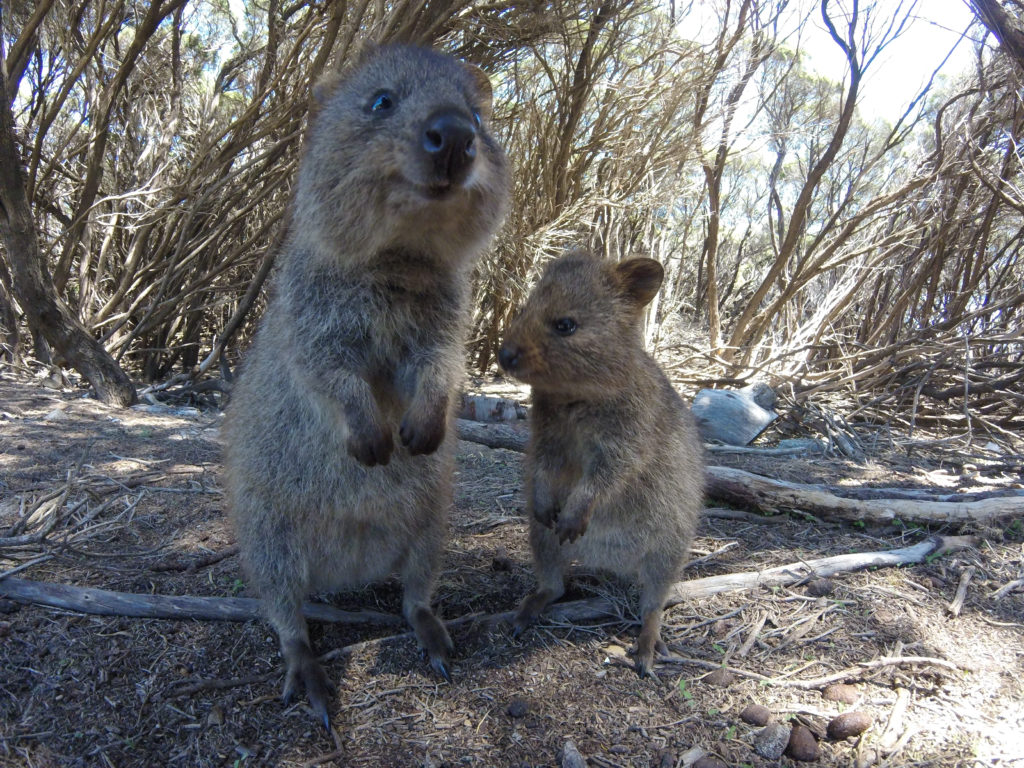
Also from Australia, meet the quokka! It’s a nocturnal marsupial that is among the smallest of the “big-footed” macropods, a family that includes kangaroos and wallabies. About the size of house cat (or a large rat, if you prefer a rodent comparison), the quokka is a calm, peaceful creature, rarely scrapping with others unless shady napping spots are in short supply. By night, they scurry along established paths through grasses in search of tasty plants…or leftovers from careless campers. Many quokkas seem to have a mysterious Mona Lisa-like grin, leading to humans labeling them the happiest creature on earth. Regardless of the quokka’s attitude, they are in peril due to invasive predators like cats (yes, pet kitties can do damage to a quokka!) and foxes.
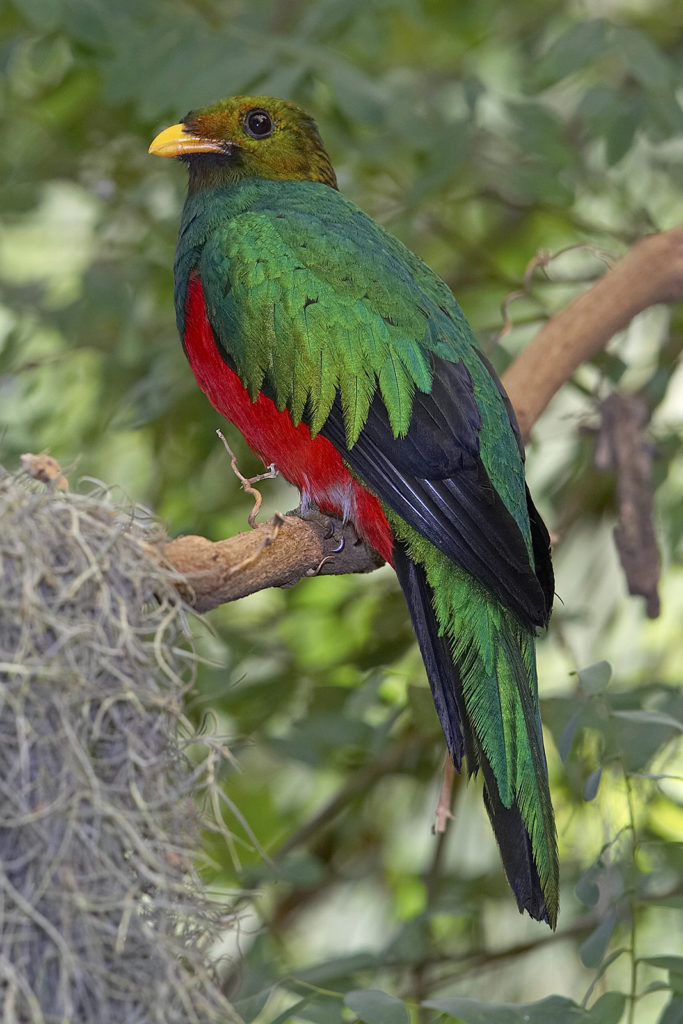
Part of the colorful, neotropical trogon family, the golden-headed quetzal joins four other flamboyant species: resplendent, crested, white-tipped and pavonine quetzals. Brightening the forests of Central and South America, they are the birds of lore and currency. The golden-headed quetzal is a striking-looking bird, often found hanging around (or rather perching around) fruiting trees.
Hopefully, this post has given you reason to “mind your Ps and Qs” at home—what animals can you add to the list?
Karyl Carmignani is a staff writer for San Diego Zoo Global. Read her story about thick-billed parrots, Going Green.

